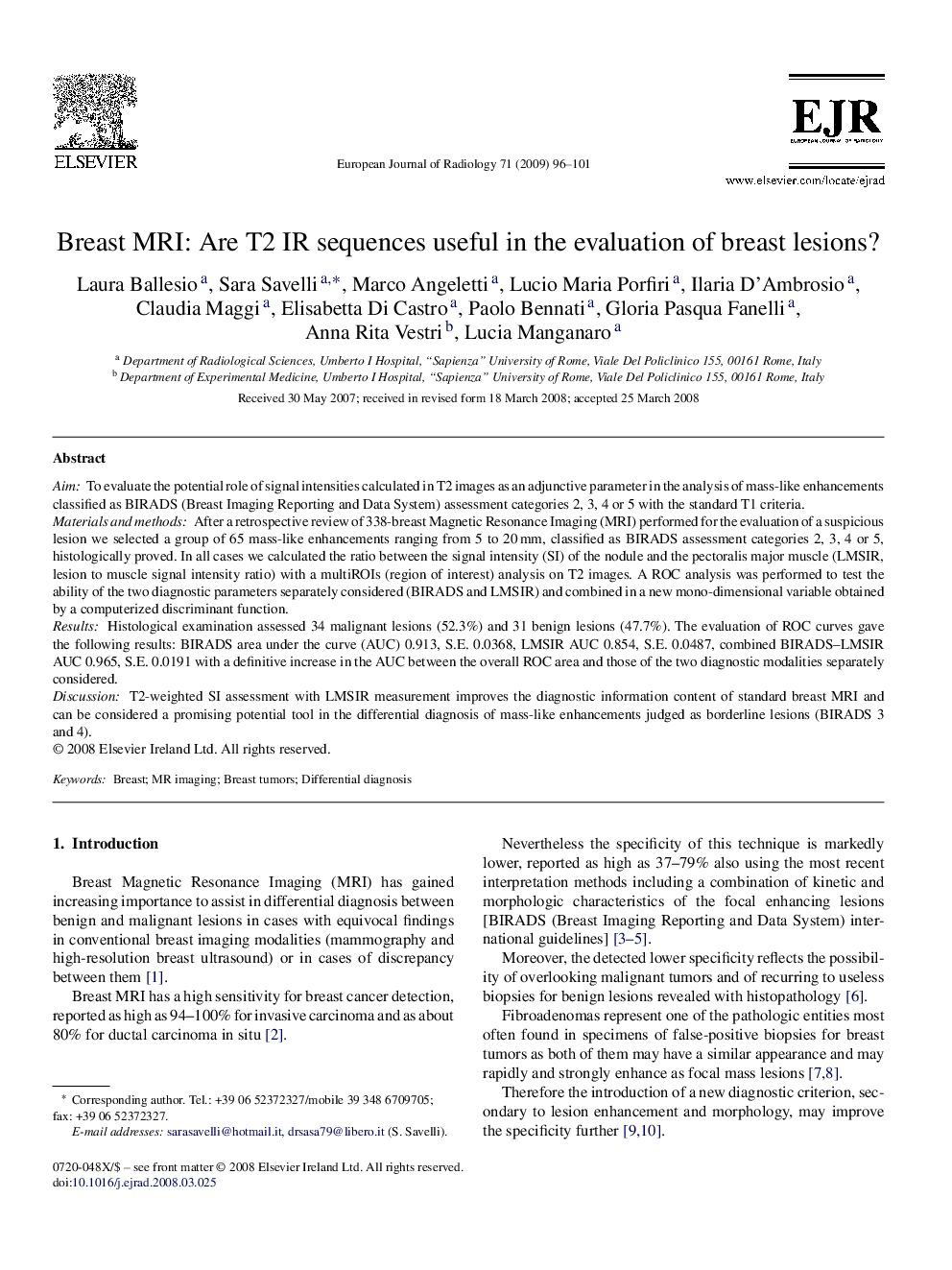| Article ID | Journal | Published Year | Pages | File Type |
|---|---|---|---|---|
| 4226892 | European Journal of Radiology | 2009 | 6 Pages |
AimTo evaluate the potential role of signal intensities calculated in T2 images as an adjunctive parameter in the analysis of mass-like enhancements classified as BIRADS (Breast Imaging Reporting and Data System) assessment categories 2, 3, 4 or 5 with the standard T1 criteria.Materials and methodsAfter a retrospective review of 338-breast Magnetic Resonance Imaging (MRI) performed for the evaluation of a suspicious lesion we selected a group of 65 mass-like enhancements ranging from 5 to 20 mm, classified as BIRADS assessment categories 2, 3, 4 or 5, histologically proved. In all cases we calculated the ratio between the signal intensity (SI) of the nodule and the pectoralis major muscle (LMSIR, lesion to muscle signal intensity ratio) with a multiROIs (region of interest) analysis on T2 images. A ROC analysis was performed to test the ability of the two diagnostic parameters separately considered (BIRADS and LMSIR) and combined in a new mono-dimensional variable obtained by a computerized discriminant function.ResultsHistological examination assessed 34 malignant lesions (52.3%) and 31 benign lesions (47.7%). The evaluation of ROC curves gave the following results: BIRADS area under the curve (AUC) 0.913, S.E. 0.0368, LMSIR AUC 0.854, S.E. 0.0487, combined BIRADS–LMSIR AUC 0.965, S.E. 0.0191 with a definitive increase in the AUC between the overall ROC area and those of the two diagnostic modalities separately considered.DiscussionT2-weighted SI assessment with LMSIR measurement improves the diagnostic information content of standard breast MRI and can be considered a promising potential tool in the differential diagnosis of mass-like enhancements judged as borderline lesions (BIRADS 3 and 4).
